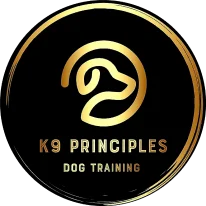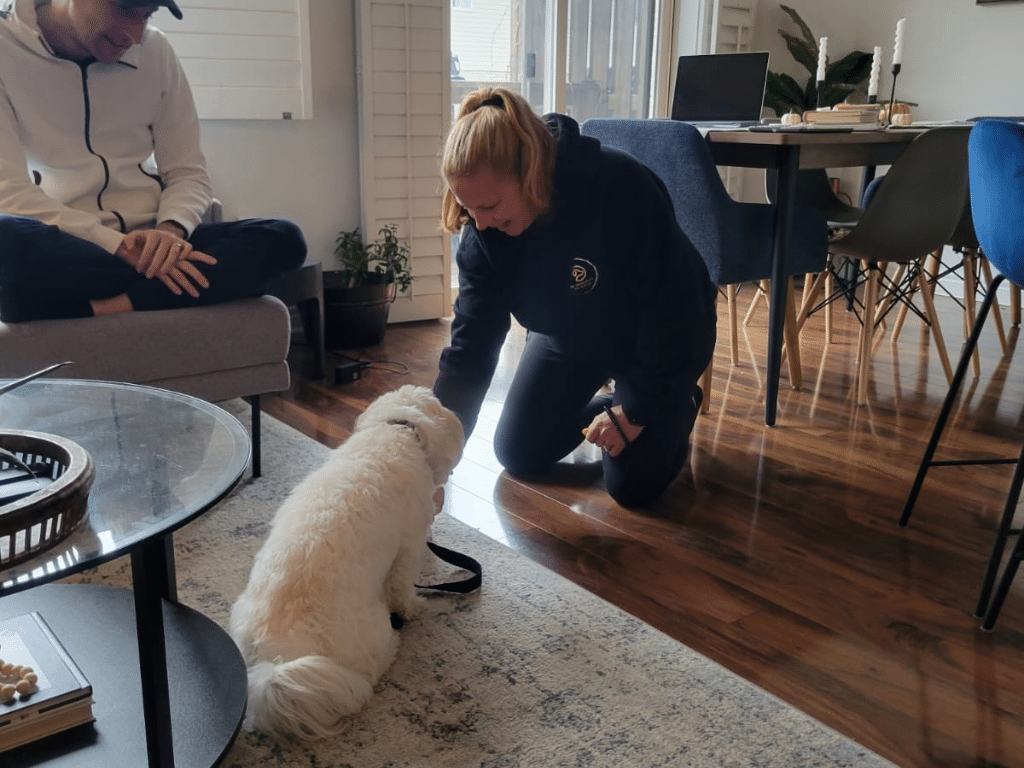When it comes to effective dog training, one size does not fit all. This principle is beautifully captured in the phrase “train the dog in front of you.” Understanding this concept can transform your approach to dog training and lead to more successful outcomes. Whether you’re a new dog owner or have years of experience, grasping the importance of personalized training is crucial.
What Does “Train the Dog in Front of You” Mean?
The phrase “train the dog in front of you” means focusing on the specific needs, behaviours, and personality of the individual dog you are working with, rather than relying solely on generalized training techniques. Every dog is unique, with its own quirks, strengths, and challenges. By paying attention to these individual characteristics, you can tailor your training methods to suit the dog’s specific needs.
Why Personalized Dog Training Matters
Personalized dog training is essential because each dog has different needs based on their breed, age, temperament, and past experiences. Customized training ensures that your dog learns more effectively because the methods are suited to their unique characteristics. Personalizing your training approach helps build a stronger bond between you and your dog, fostering trust and understanding. Tailored training can address specific behavioral issues more accurately, leading to better long-term results.
How to Train the Dog in Front of You
To effectively train the dog in front of you, start by assessing your dog’s individual characteristics. Understanding the common traits and behaviours associated with your dog’s breed can provide valuable insights. Observe your dog’s temperament. Are they calm, energetic, shy, or assertive? Considering any past experiences that may influence your dog’s behaviour, such as previous training or trauma, is also crucial.
Setting realistic goals is the next step. Establish achievable short-term goals to keep the training process manageable. Define long-term goals based on the desired behaviour and skills you want your dog to develop. Choosing the right training techniques is essential. Use positive reinforcement techniques such as treats, praise, and play to encourage desired behaviours. Consistency with commands and rewards helps your dog understand what is expected of them. Patience is key, as you must give your dog time to learn at their own pace.
Monitoring progress and adjusting your methods as needed is vital. Regularly evaluate your dog’s progress and be flexible and willing to change your approach if something isn’t working. Personalized dog training requires ongoing assessment and adaptation to ensure the best results.
Common Mistakes to Avoid
Avoiding common mistakes can significantly improve your dog training experience. Overgeneralization, or applying the same techniques to every dog without considering individual differences, can lead to ineffective training. Inconsistency in cues and rewards can confuse your dog and hinder their learning. Lack of patience, and expecting immediate results, can lead to frustration for both you and your dog. Recognizing and avoiding these pitfalls can help you develop a more effective training approach.
Understanding Breed-Specific Traits and Behaviors
 Each dog breed has its own set of characteristics and behaviours. Understanding these breed-specific traits can help you tailor your training approach. For example, Border Collies are known for their high energy and intelligence, which require mental stimulation and physical exercise. On the other hand, Bulldogs may have a more relaxed demeanour and need a different approach. By recognizing these differences, you can create a training plan that suits your dog’s natural tendencies and strengths.
Each dog breed has its own set of characteristics and behaviours. Understanding these breed-specific traits can help you tailor your training approach. For example, Border Collies are known for their high energy and intelligence, which require mental stimulation and physical exercise. On the other hand, Bulldogs may have a more relaxed demeanour and need a different approach. By recognizing these differences, you can create a training plan that suits your dog’s natural tendencies and strengths.
The Role of Temperament in Dog Training
 Temperament plays a significant role in how a dog responds to training. Some dogs may be more eager to please and quick to learn, while others may be more independent or stubborn. Understanding your dog’s temperament can help you choose the most effective training methods. For instance, a highly energetic dog may benefit from more active training sessions, while a shy dog may require a gentler approach. Tailoring your training to your dog’s temperament can lead to more successful outcomes.
Temperament plays a significant role in how a dog responds to training. Some dogs may be more eager to please and quick to learn, while others may be more independent or stubborn. Understanding your dog’s temperament can help you choose the most effective training methods. For instance, a highly energetic dog may benefit from more active training sessions, while a shy dog may require a gentler approach. Tailoring your training to your dog’s temperament can lead to more successful outcomes.
Addressing Past Experiences and Trauma
A dog’s past experiences can significantly impact their behaviour and response to training. Dogs that have experienced trauma or negative experiences may require special attention and care. Understanding and addressing these past experiences is crucial for effective training. Patience, positive reinforcement, and building trust are essential components when working with dogs that have a history of trauma. Our professional dog trainers at K9 Principles are skilled in handling such cases, providing the necessary support and expertise to help your dog overcome their past and thrive.
Setting Achievable Training Goals
 Setting realistic and achievable training goals is essential for success. Start with simple, manageable tasks and gradually progress to more complex behaviours. Short-term goals provide a sense of accomplishment and keep the training process engaging for both you and your dog. Long-term goals should focus on developing the desired behaviours and skills that will benefit your dog in the long run. Consistently working towards these goals with patience and perseverance will yield positive results.
Setting realistic and achievable training goals is essential for success. Start with simple, manageable tasks and gradually progress to more complex behaviours. Short-term goals provide a sense of accomplishment and keep the training process engaging for both you and your dog. Long-term goals should focus on developing the desired behaviours and skills that will benefit your dog in the long run. Consistently working towards these goals with patience and perseverance will yield positive results.
Choosing the Right Training Techniques
The choice of training techniques can significantly impact your dog’s learning experience. Positive reinforcement is a highly effective method that involves rewarding desired behaviours with treats, praise, or play. This approach encourages your dog to repeat the behaviour. Consistency is crucial in training. Using the same cues and rewards helps your dog understand what is expected of them. Patience is also vital, as each dog learns at their own pace. Giving your dog the time they need to learn and adapt ensures a more successful training outcome.
The Importance of Consistency in Training
Consistency is a key factor in successful dog training. Using consistent cues and rewards helps your dog understand what is expected of them. Inconsistent training can confuse your dog and hinder their learning process. Ensure that all family members use the same commands and follow the same training protocols to provide a clear and consistent message to your dog. Consistency in training fosters a stable learning environment and helps your dog develop the desired behaviours more effectively.
Monitoring Progress and Adjusting Training Methods
Regularly monitoring your dog’s progress and adjusting your training methods as needed is essential for effective training. Keep track of your dog’s achievements and identify any areas that may require additional attention. Being flexible and willing to change your approach if something isn’t working is crucial. Personalized dog training is an ongoing process that requires continuous assessment and adaptation to ensure the best results for your dog.
The Benefits of Professional Guidance
Seeking professional guidance from experienced trainers like those at K9 Principles can significantly enhance your dog training experience. K9 Principles professional dog trainers have the expertise to assess your dog’s unique needs and develop a customized training plan. They provide continuous support and guidance, ensuring that you and your dog achieve the best possible outcomes. K9 Principles offers professional dog training in Hamilton and surrounding areas, focusing on personalized training that addresses the specific requirements of each dog.
Conclusion
Training the dog in front of you is about recognizing and responding to the unique needs of your dog. By adopting a personalized approach, you can achieve more effective training outcomes and build a stronger bond with your canine companion. For those in Hamilton seeking professional dog training services, K9 Principles offers expert guidance and customized training plans to help you and your dog succeed. Personalized dog training requires patience, consistency, and an understanding of your dog’s individual characteristics. With the right approach, you can ensure a successful and rewarding training experience.
- Name: K9 Principles
- Address: Haldimand County, Greater Hamilton Area, Burlington and Most of Norfolk County
- Phone: 289 880-3382
- Email: k9principlesinc@gmail.com
- Website: www.k9principles.ca
FAQs
-
The best age to start training your dog is as early as possible. Puppies as young as 8 weeks old can begin basic training. However, it is never too late to start training an older dog.






